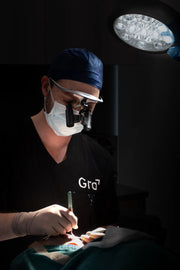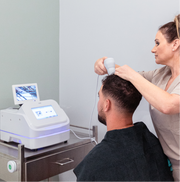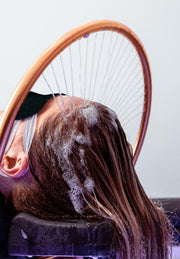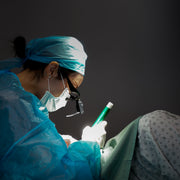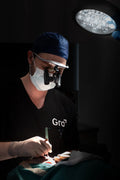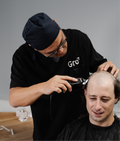Hair loss affects millions of people and is influenced by factors like age, genetics, hormonal changes, and underlying health conditions. While prescription medications are one option, it’s important to weigh their potential benefits against their risks and limitations. In this article, we explore different causes of hair loss and why medications may not be the best standalone solution for everyone.
Common Types of Hair Loss
- Androgenic alopecia: Commonly known as pattern hair loss. A genetic form of hair thinning that can affect both men and women.
- Traction alopecia: Hair loss caused by prolonged tension on the scalp from certain hairstyles or habits.
- Scarring alopecia: Permanent hair loss due to inflammation that damages the follicle.
- Alopecia areata: Patchy hair loss typically associated with autoimmune triggers.
- Telogen effluvium: Temporary shedding following stress, illness, or major life events.
- Anagen effluvium: Hair loss during the active growth phase, often linked to chemotherapy.
- Tinea capitis: A fungal infection of the scalp.
- Hormonal imbalances: Changes after childbirth, menopause, or thyroid dysfunction may also trigger hair thinning.
When to Seek Professional Advice
If you experience any of the following symptoms, it’s worth booking a consultation with a Hair Growth Advisor to discuss treatment options:
- Sudden or rapid hair loss
- Patchy or irregular hair shedding
- Redness, itching, or discomfort on the scalp
- Hair loss accompanied by hormonal symptoms (e.g. acne, irregular cycles)
- Shedding after starting new medications
Medication for Hair Loss: What to Know
Prescription hair loss medications are often considered first-line treatment. However, they do not work for everyone and require ongoing use. In Australia, prescription medications for hair loss must be approved by the TGA and are available via medical consultation. Learn more about Gro’s prescription haircare program.
Considerations with Hair Loss Medications
- Not suitable for all types of hair loss
- May take months to show results
- Effectiveness varies between individuals
- Must be taken continuously to maintain benefit
- May cause side effects, which should be discussed with a prescribing doctor
Exploring Non-Medication Alternatives
If medication isn’t suitable or well-tolerated, there are other options:
- Doctor-led hair restoration procedures
- LED light therapy
- Laser stimulation (Fotona HairRestart)
- Platelet-rich fibrin (PRF) and growth factor treatments
- Scalp micropigmentation (SMP)
Clinics Across Australia and New Zealand
Gro Clinics are located in:
Ready to explore your options? Book your consultation or ask a question.

